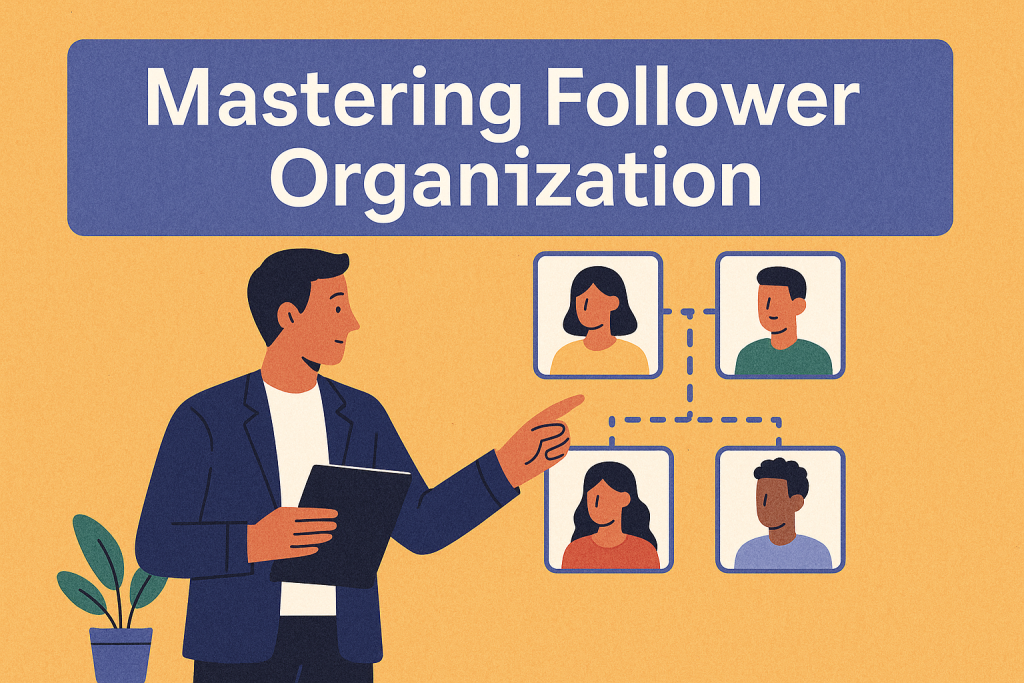Effective teams need more than strong leaders – they require engaged, thoughtful contributors at every level. While leadership gets most headlines, the real magic happens when team members work together with purpose. This article reveals why how we support each other matters more than ever in today’s fast-paced work environments.
Gone are the days when team members simply took orders. Modern workplaces thrive when everyone actively shapes outcomes. Successful groups balance clear direction with creative input from all roles. Research shows organizations with engaged contributors see 21% higher productivity than those relying solely on top-down leadership.
We’ll explore practical ways to strengthen workplace relationships while maintaining professional boundaries. You’ll learn how military units and Fortune 500 companies build cultures where every voice adds value. Discover why hospitals and tech startups alike prioritize two-way communication in high-pressure situations.
This guide isn’t about creating yes-people. It’s about developing team players who ask smart questions while driving shared goals. You’ll gain tools to improve decision-making processes and ethical practices within your group. Let’s rethink what true collaboration looks like in 2025 and beyond.
Key Takeaways
- Modern team success requires active participation from all members, not just leaders
- Strong workplace relationships improve communication and ethical decision-making
- High-performing groups balance structure with creative input from every role
- Real-world examples show improved results in diverse fields from healthcare to tech
- Practical strategies help maintain professional boundaries while driving innovation
Understanding the Principles of Effective Followership
Great teams thrive when every member contributes thoughtfully – not just those in charge. Two core practices separate passive observers from engaged contributors: meaningful dialogue and honest input. Let’s explore how these principles create better outcomes for everyone involved.
Active Participation in Team Discussions
True collaboration means more than nodding during meetings. It’s about sharing insights that push projects forward. Ask clarifying questions. Suggest alternatives when roadblocks appear. As one tech manager notes:
“Our best solutions come from team members who connect daily tasks to quarterly goals.”
Strategic participation shows you grasp how your work impacts broader objectives. It helps leaders spot opportunities they might miss alone. Plus, it builds trust when colleagues see you’re invested in shared success.
Providing Constructive Feedback
Offering thoughtful input to leaders requires both courage and care. Focus on specific situations rather than generalizations. Instead of “This approach isn’t working,” try “Could we test a shorter timeline for Phase 2? Our last sprint suggests we might save three weeks.”
Effective feedback balances respect with honesty. Highlight what’s working first, then present alternatives. This approach keeps conversations solution-focused. Remember, good leaders want to hear perspectives that improve results – they just need those ideas delivered thoughtfully.
By mastering these skills, you become the kind of contributor teams rely on to navigate challenges and innovate. The best groups aren’t leader-centric – they’re idea-rich environments where everyone’s input shapes success.
The Role of Effective Followership in Team Dynamics
What separates good teams from truly exceptional ones? It’s how members amplify each other’s strengths through purposeful collaboration. When followership thrives, groups achieve results that feel almost effortless – like a well-tuned engine where every part matters.
Enhancing Collaboration and Productivity
Strong team environments don’t happen by accident. They’re built when members consistently show up for each other. A recent study found teams with engaged contributors complete projects 34% faster than disconnected groups. Why? Because they share resources freely and fix bottlenecks before they stall progress.
“Our design team’s breakthrough came when junior members started flagging workflow issues in real-time,” notes Spotify’s product lead. “That’s followership in action – everyone owns the outcome.”
| Aspect | Effective Followership Teams | Ineffective Followership Teams |
|---|---|---|
| Collaboration | Daily knowledge sharing | Siloed tasks |
| Productivity | Process improvements suggested weekly | Same methods used for years |
| Conflict Resolution | Issues addressed within 48 hours | Problems linger for weeks |
Balancing Individual Opinions with Team Goals
Great contributors know when to push ideas and when to pivot. Take Google’s Project Aristotle findings: top-performing teams let members disagree constructively but united behind final decisions. This balance requires emotional awareness – recognizing if your stance helps or hinders team goals.
Next time you’re in a meeting, try this: jot down three ways your suggestion serves the group’s mission. If all three connect, speak up. If not, listen first. This simple filter builds trust and keeps discussions focused on what matters most.
Mastering Follower Organization: Strategies for Implementation
Transforming group potential into consistent results requires intentional systems. While leaders set direction, engaged members create momentum through structured collaboration. Let’s explore practical methods to elevate your role while strengthening group outcomes.
Creating Your Action Roadmap
Start by mapping your organization’s decision pathways. A healthcare project manager shares:
“I track how ideas move from brainstorming to implementation – that knowledge helps me contribute at the right moments.”
| Effective Approach | Common Pitfall |
|---|---|
| Weekly progress summaries shared with leaders | Last-minute updates causing delays |
| Anticipating resource needs before meetings | Reacting to problems after they arise |
| Documenting lessons learned per project | Repeating past mistakes |
Develop a personal tracking system. This could be simple bullet journals or digital tools aligning with your team’s workflow. The goal? Stay three steps ahead without overstepping boundaries.
Designing Meaningful Dialogue Channels
Constructive feedback thrives when timing and format align. Try these steps:
- Schedule monthly check-ins with leaders to discuss process improvements
- Share observations using “I’ve noticed…” statements rather than critiques
- Pair suggestions with data – “Our metrics show X trend. Could we test Y approach?”
Emergency response coordinator Mia Torres notes: “After training staff to flag supply shortages early, our crisis response time improved by 40%.” This proves providing constructive input saves resources at every level.
Remember, your growth as a contributor involves continuous development. Track which strategies yield better outcomes, then refine your approach quarterly. Great teams evolve through their members’ commitment to improvement.
Navigating Leadership, Management, and Followership Dynamics
In every thriving workplace, three key roles interact like gears in a clock – each turning others forward. Recognizing how these pieces connect creates smoother operations and stronger outcomes. Let’s break down what makes each role unique and how they work together.
Defining the Roles: Follower, Leader, and Manager
A follower actively supports goals while offering expertise – think less “order-taker,” more “co-driver.” Managers focus on processes, using positional power from their job titles to keep workflows on track. Leaders, whether formal or informal, inspire action through vision and earned trust.
“Even generals answer to civilian leadership,” notes Colonel James Ruiz. “True effectiveness comes from respecting both roles.”
Understanding Positional and Personal Power
Positional authority gets tasks done, but personal influence fuels lasting change. Compare these power sources:
| Positional Power | Personal Power |
|---|---|
| Comes from job title | Built through expertise |
| Ensures compliance | Drives commitment |
| Fixed scope | Grows with experience |
Smart contributors adjust their approach based on who they’re supporting. For managers: provide clear updates. For leaders: share strategic ideas. This flexibility helps teams harness both types of power effectively.
Applying Followership Concepts in Emergency and Organizational Contexts
High-pressure environments reveal what truly drives team effectiveness. When stakes involve lives or critical operations, followership becomes the backbone of mission accomplishment. These scenarios show how prepared teams operate as unified systems – even when chaos erupts.
Lessons from Military and Emergency Management
Army units and disaster response teams rely on competent contributors who act decisively within their roles. A retired Special Forces commander shares:
“Our medics made split-second treatment calls during evacuations. Their judgment saved lives because they understood both protocol and battlefield realities.”
| Military Context | Corporate Adaptation |
|---|---|
| Clear chain of command | Defined decision rights |
| Values-driven actions | Ethical frameworks |
| Stress-testing through drills | Scenario planning |
Emergency responders train to anticipate resource gaps before crises hit. This proactive mindset separates reactive teams from those achieving success against odds.
Leveraging Followership for Organizational Success
Companies adopting military-style training see 28% faster crisis recovery times. Tech firms now run “stress sprints” where junior staff lead mock system outages. These exercises build two crucial skills:
- Independent problem-solving within boundaries
- Clear escalation protocols during uncertainty
Southwest Airlines’ emergency preparedness program exemplifies this approach. Frontline crews receive responsibility to reroute flights during weather events – a practice reducing delays by 19% last year.
Whether in hospitals or boardrooms, followers who own their role’s impact create resilient organizations. They transform pressure into progress through preparation and mutual trust.
Cultivating Constructive Feedback and Trust within Teams
Trust forms the bedrock of every high-performing team. When leaders and members share honest perspectives – even uncomfortable truths – groups develop resilience that outlasts temporary setbacks. This mutual confidence grows through small, consistent actions rather than grand gestures.
Techniques for Effective Leader Support
Great collaborators anticipate needs before requests arise. Notice patterns in your leader’s challenges – could you prepare weekly briefings addressing recurring issues? A healthcare coordinator shares: “Tracking supply trends helped me alert supervisors before shortages occurred.”
Regular check-ins strengthen trust while preventing misunderstandings. Try framing feedback around shared goals: “How might adjusting our timeline help the team meet quarterly targets?” This approach keeps conversations solution-focused.
Build bridges beyond your immediate circle. Strong contributors maintain connections across departments, creating networks that amplify their support. Remember – good followers balance loyalty with respectful honesty, knowing silence often costs more than tactful truth.
True collaboration thrives when everyone feels heard. By combining proactive support with compassionate candor, you help create environments where ideas flourish and challenges become growth opportunities. This is how teams make better decisions – and better results – together.
FAQ
What is effective followership?
Effective followership involves actively supporting leaders while contributing ideas, respecting team goals, and fostering trust. It’s about balancing initiative with collaboration to drive organizational success.
How can I provide constructive feedback without overstepping?
Focus on solutions, not blame. Frame feedback around shared objectives, use respectful language, and align suggestions with the team’s vision. Timing and context also matter—choose private settings for sensitive topics.
Why is balancing individual opinions with team goals important?
Teams thrive when diverse perspectives merge into cohesive strategies. Respecting collective aims while voicing ideas prevents conflicts and ensures alignment, boosting productivity and morale.
What steps improve follower organization within teams?
Clarify roles, set measurable targets, and establish open communication channels. Regular check-ins and training programs help refine skills, ensuring everyone contributes effectively to shared outcomes.
How do leaders and followers differ in organizational dynamics?
Leaders set vision and direction, while followers execute plans and offer insights. Both rely on mutual respect—strong followership empowers leaders to make informed decisions, creating a cycle of success.
Can followership strategies from emergency management apply to businesses?
Absolutely. Military and emergency teams prioritize adaptability, clear communication, and trust—principles that translate to corporate settings. These practices enhance crisis response and daily operations alike.
How does constructive feedback build trust in teams?
Honest, respectful feedback shows commitment to growth. When leaders and peers act on input, it reinforces accountability and psychological safety, strengthening relationships and performance over time.
What role does personal power play in followership?
Personal power stems from expertise, empathy, and influence—not titles. Followers who leverage these traits inspire peers, support leaders, and drive change, even without formal authority.







